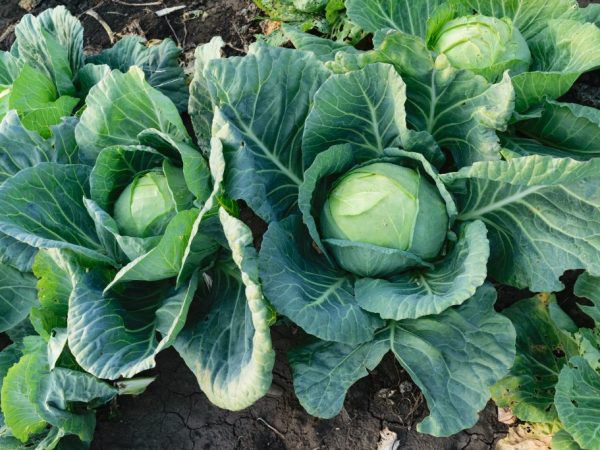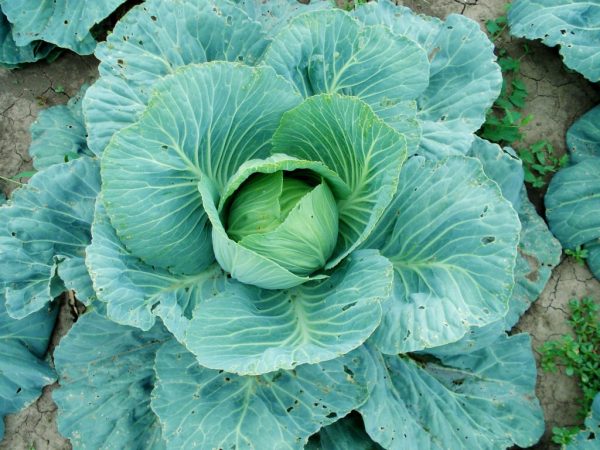Is it worth picking off the lower leaves of the cabbage
To pick off the leaves of cabbage or not is a controversial issue. Some are harvested and get a high quality harvest. Others - no, but the quality of the heads of cabbage remains good.

The benefits and harms of breaking off the lower leaves of cabbage
Vegetable foliage function
All cultural development is aimed at the formation of a head of cabbage. The purpose of the leaves is not the beauty of the plant. They fulfill their functions:
- During photosynthesis, they produce nutrients and trace elements, which are the building blocks of vegetables.
- Head formation begins when 7 or more leaves appear. The future harvest depends on their number on the outlet.
- Weight should also not decrease during growth. The wax coating on the leaf side will protect against diseases and pests.
- In hot weather, they act as a temperature regulator: they protect the inside from overheating.
- The content of vitamin C in the hard ball of cuttings is 2 times higher than that characteristic of the inner part of the head. When ripe, the vitamin is distributed throughout the vegetable.
Tearing off the lower leaves of cabbage at the initial stage of growth is undesirable: this additionally injures the plant. Instead of full-fledged growth, it spends energy on healing the affected areas.
The leaves form a shadow for the trunk circle. At the same time, the soil retains coolness and water for a long time. This is an important aspect, because broccoli loves moist soil and withers when there is a lack of moisture.
At the end of summer, there is a rapid growth, at this time you should not break off the leaves. The vegetable is recommended to be harvested together with the lower ball: this way the harvested crop will continue to develop as long as nutrients are retained in the leaves.
Why pick leaves
When the head of cabbage is fully formed, the need for more green tops is reduced. Indications for picking off the lower leaves of cabbage:
- Withering or drying out of cuttings. A decrease in the transfer of nutrients throughout the plant and a deficiency of trace elements coming from the soil through the roots also ends in an indication for breakage.
- Harvesting leaves with excessive deflection to the ground. Taking preventive measures against pests becomes difficult. When processing, the cuttings are able to come off themselves.
- Hilling. You can pick off the lower leaves of cabbage, which interfere with plant development and proper watering. The cabbage is spud so that additional roots appear in the lower part of the plant, which can give stability.
- Watering. A spread crop can interfere with watering. In order for the water to fully flow to the near-stem circle, the leaves of the cabbage are cut off from below. The reason for removal is sometimes a significant looseness of the head of cabbage. Proper watering prevents rotting.
- Head cracking. This is a feature of early varieties. If the leaves are not cut off in time, the head of cabbage will crack. When cuttings are removed, development slows down, cracking stops.Alternatively, the plant is slightly pulled out of the ground. With this method, its growth also slows down.
- Increase in mass. Gardeners prefer to use cutting off the bottom layers when they want to increase the weight of the vegetable.
Pest and disease control

Sick leaves are removed
The method of removing leaves when they are affected by diseases and pests is justified. When the main habitat of small parasites is destroyed, the quality of the crop increases. Pests include:
- Aphids. She lives in the low parts of the vegetable. In some cases, instead of using chemical pesticides, leaves dropped to the ground are removed and destroyed along with the parasite.
- Scoop. Pupae of this pest emerge from the ground after a long winter and lay eggs on the lower leaves of cabbage. When such parasites appear, it is considered justified to destroy the leaves below.
- Cabbage fly. The insect lays eggs in the soil, covered by parts of the culture close to the ground. To get rid of this pest, they remove the ground, clean the bottom of the stem. If you do not tear off the sheets, they themselves come off during processing.
Sometimes these methods do not help, and pest control products are used to kill the parasites.
Among the diseases of this culture, vascular bacteriosis is distinguished. When the leaves have turned yellow, acquired a lifeless appearance or acquired black veins, measures are applied. Some tear off cuttings of neighboring plants for preventive purposes. Unfortunately, this does not help in the fight against the disease. In case of damage by vascular bacteriosis, the plant is carefully removed from the garden so that neighboring heads of cabbage do not become infected.
The tearing process
Tearing off the crop is best done in warm and dry weather. Tearing off begins one at a time. Each next cutting is cut off after the wound of the previous one heals and dries up. The process is carried out with an interval of at least a week. It is worth picking off the lower leaves of cauliflower immediately before harvesting when the head of cabbage is fully ripe. If the forks are loose, the stem is left bare. Pruning is used as feed for livestock or poultry.
Completion
It is difficult to determine unequivocally whether it is necessary to pick off the lower leaves of the cabbage. You should familiarize yourself with all the positive and negative results of this procedure. In some cases, removal is carried out based on the properties of a particular vegetable variety.


